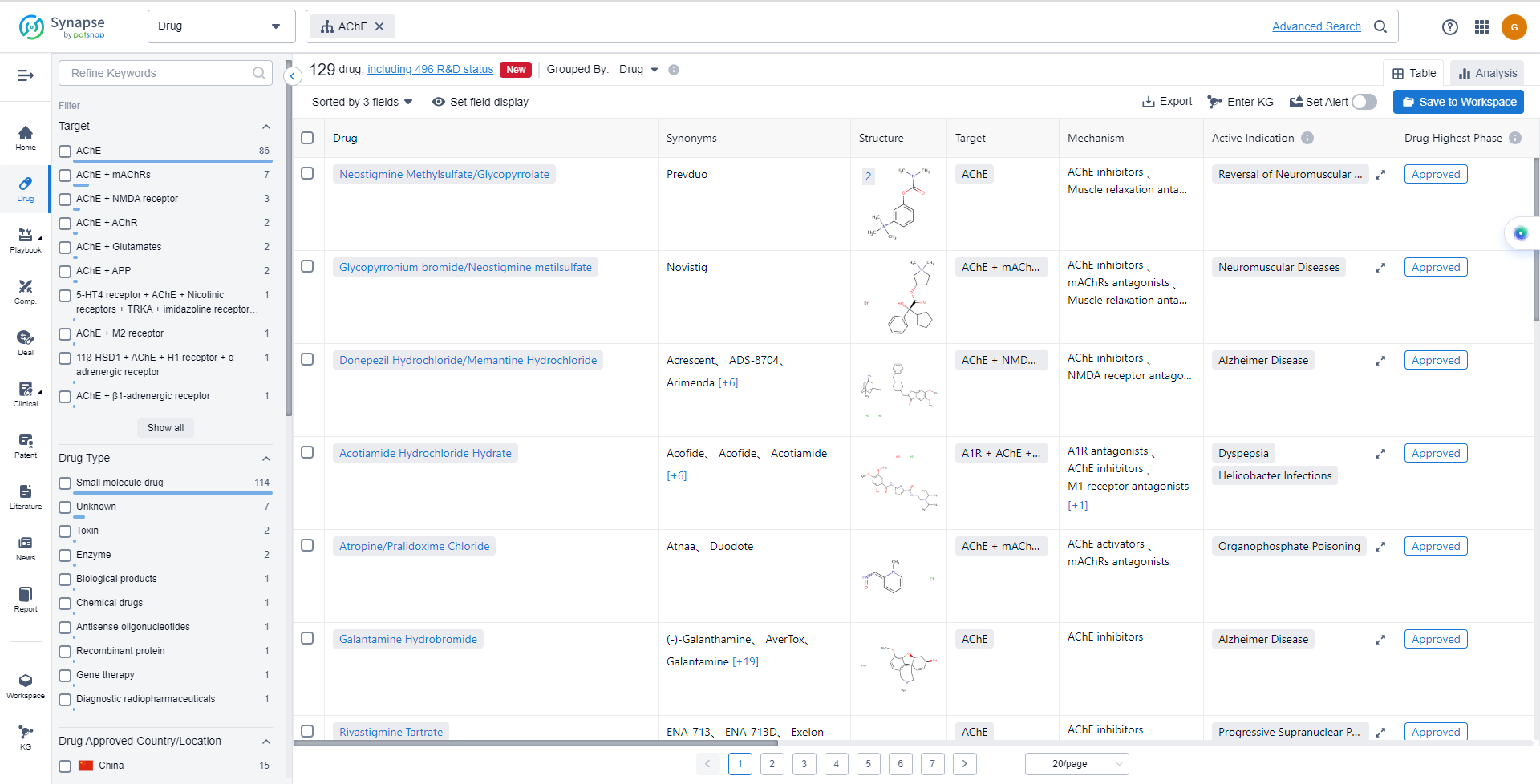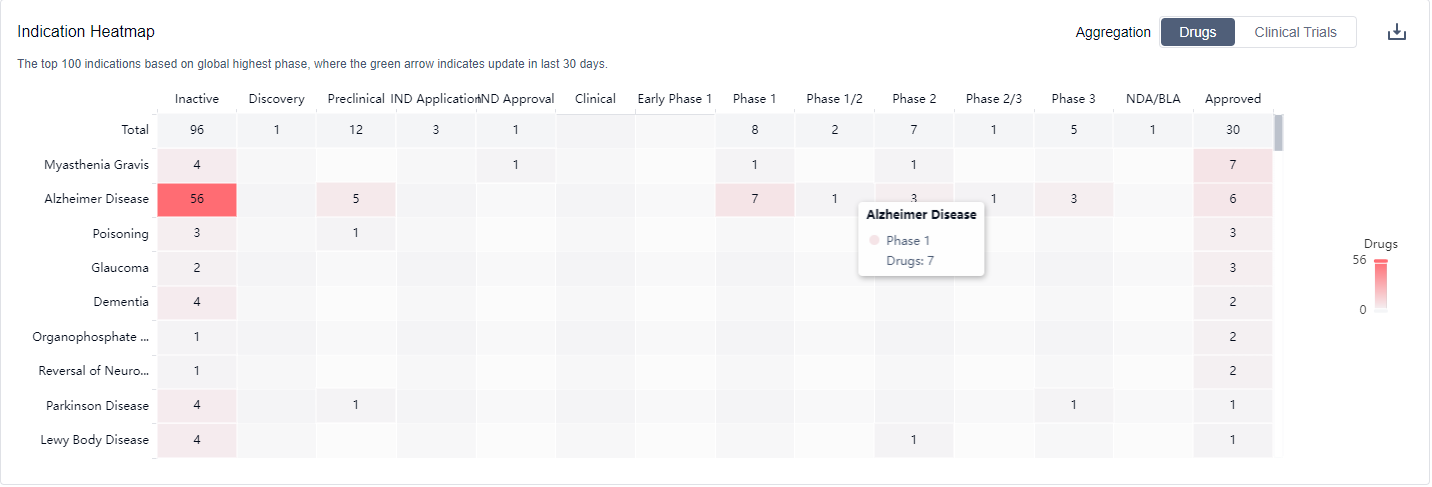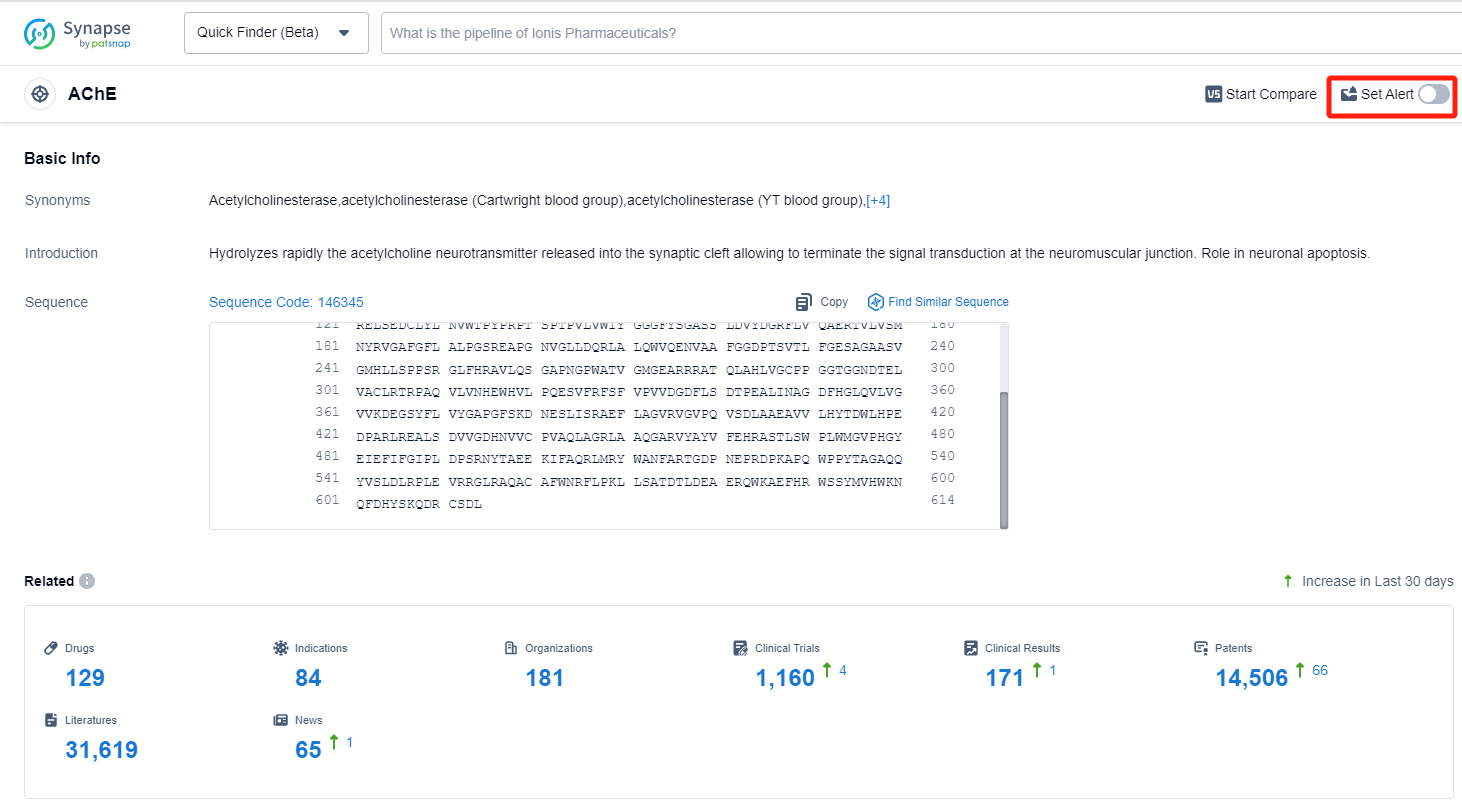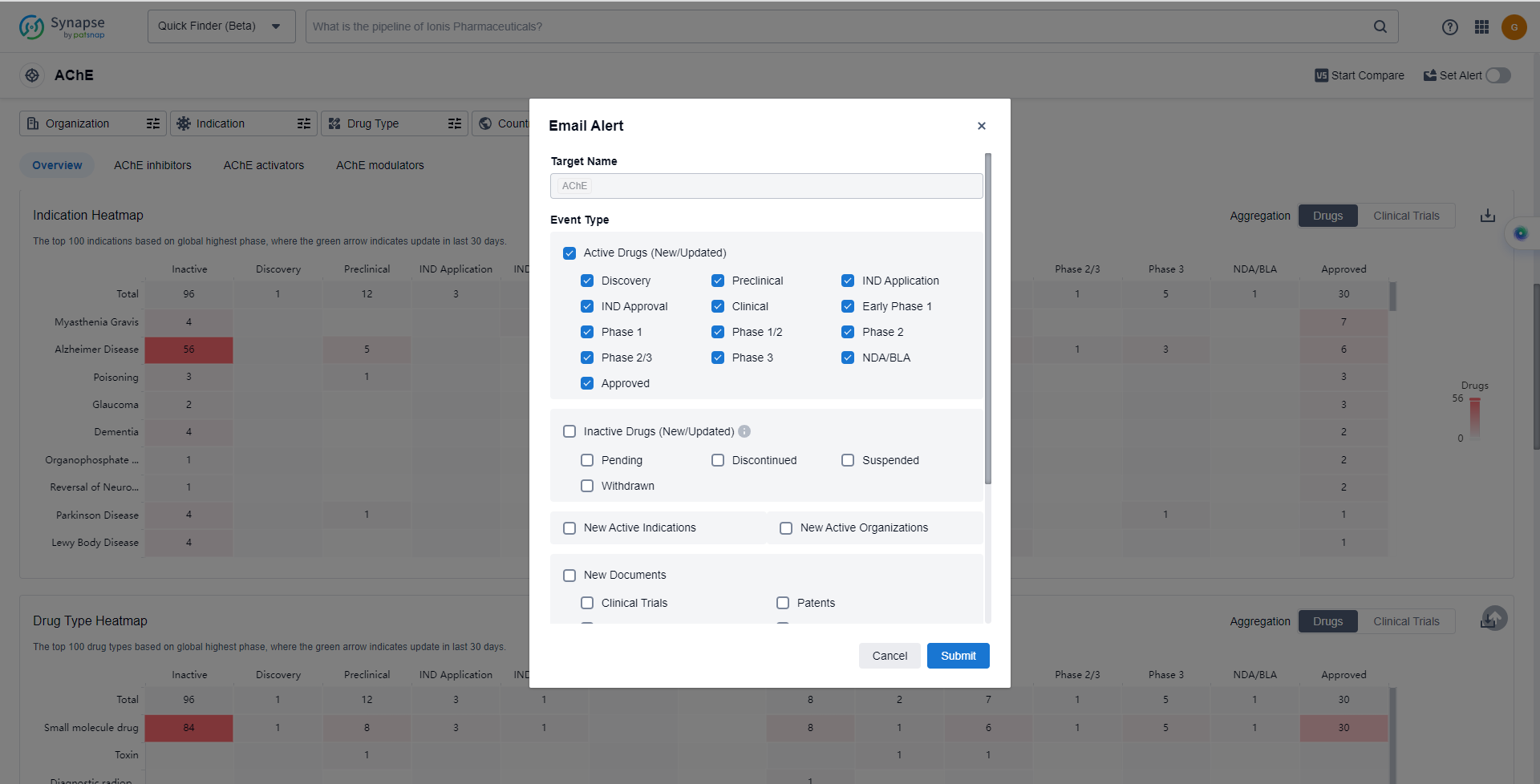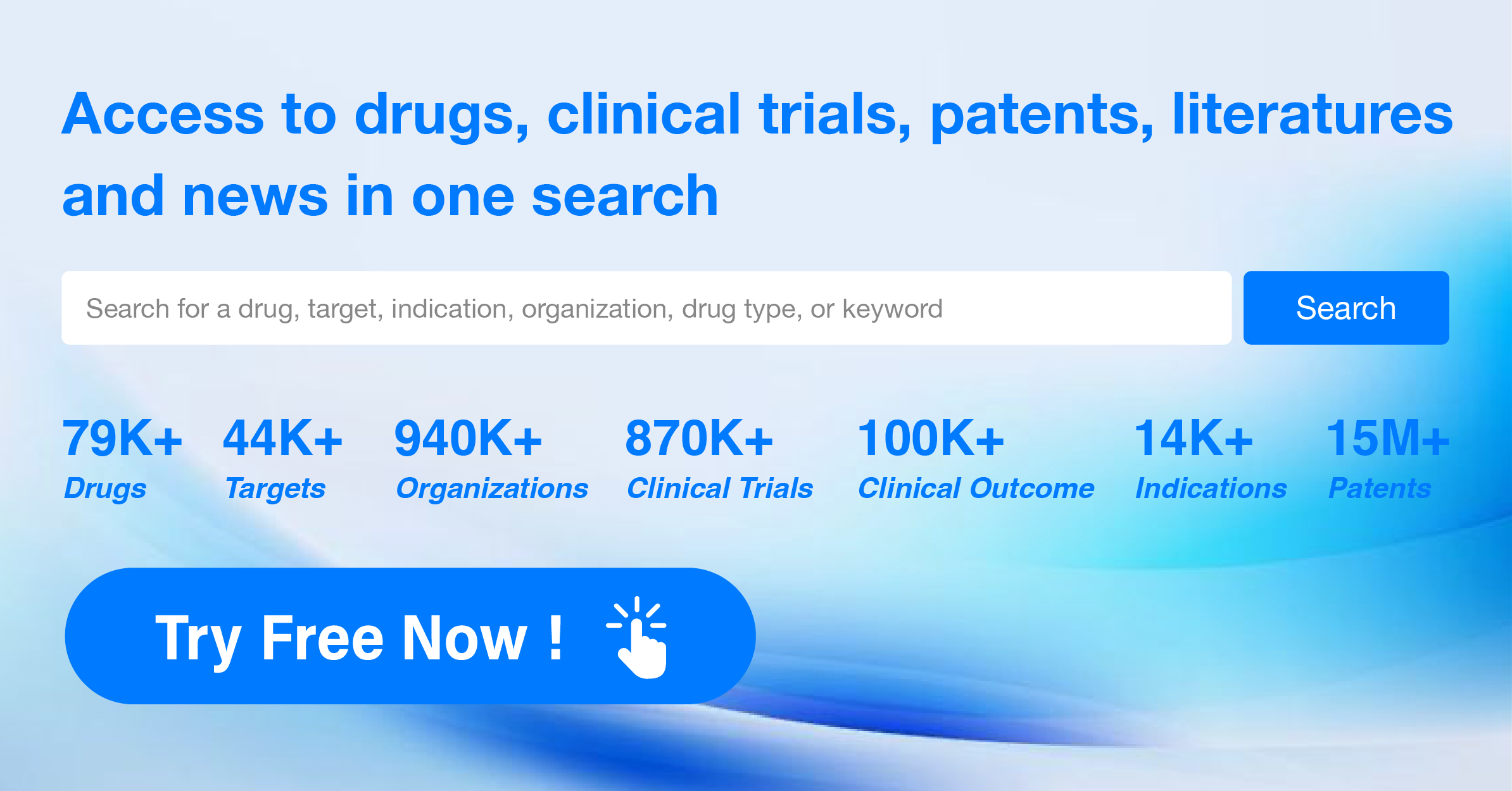What are acetylcholinesterase inhibitors and how do you quickly get the latest development progress?
Acetylcholinesterase (AChE) is recognized for its impressive turnover number, which is approximately 1.5 × 104 s−1, positioning it as one of the most efficient enzymes known. In the skeletal neuromuscular junction, the catalysis of released acetylcholine must happen exceptionally quickly, within a submillisecond time frame, to enable the next acetylcholine release to prompt a postsynaptic excitatory potential. Setting AChE (EC 3.1.1.7) apart from butyrylcholinesterase (BChE; EC 3.1.1.8) is its specific catalytic preference for acetylcholine over butyrylcholine hydrolysis. The typical production sites for AChE include the nerve, muscle, and some hematopoietic cells. The expression of AChE in excitable tissues is controlled based on the specific developmental factors of the tissue, positioning the enzyme on the extracellular surface of both nerve and muscle. The AChE seen in the neuromuscular junction of skeletal muscle is produced by the muscle, not the nerve cell. AChE inhibitors come into play as treatments for conditions such as Alzheimer’s disease, myasthenia gravis, glaucoma, smooth muscle atony, and various disorders involving autonomic nervous system functions.
AChE, as the first target for AD treatment approved by the FDA, currently has many drugs on the market. Donepezil, rivastigmine, and tacrine are common treatments for AD. They have excellent blood-brain barrier permeability and inhibit both AChE and BChE. However, AChE inhibitors such as neostigmine or pyridostigmine, which are quaternary ammonium carbamates, are charged at physiological pH and cannot cross the blood-brain barrier due to their quaternary structure. Although ACh regulation therapy has some efficacy, due to the potential interaction between accumulated AChE and beta-amyloid plaques leading to increased neurotoxicity, AChE remains an important target for drug development.
How do they work?
AChE inhibitors are a type of medication that inhibit the activity of the enzyme acetylcholinesterase (AChE). Acetylcholinesterase is responsible for breaking down the neurotransmitter acetylcholine in the synaptic cleft, which is necessary for proper nerve signal transmission. By inhibiting AChE, these medications increase the levels of acetylcholine in the brain, leading to enhanced cholinergic neurotransmission.
From a biomedical perspective, AChE inhibitors are commonly used in the treatment of Alzheimer's disease. In Alzheimer's disease, there is a decrease in cholinergic neurotransmission due to the degeneration of cholinergic neurons. AChE inhibitors help to alleviate the symptoms of Alzheimer's by increasing the availability of acetylcholine in the brain, improving memory and cognitive function.
AChE inhibitors can also be used in the management of other conditions such as myasthenia gravis, a neuromuscular disorder characterized by muscle weakness and fatigue. In this case, AChE inhibitors help to improve muscle strength by enhancing the transmission of nerve impulses to the muscles.
It is important to note that the use of AChE inhibitors can have side effects, including gastrointestinal disturbances, nausea, vomiting, and muscle cramps. Additionally, these medications may interact with other drugs, so it is crucial to consult a healthcare professional before starting or changing any medication regimen involving AChE inhibitors.
List of acetylcholinesterase Inhibitors
The currently marketed acetylcholinesterase inhibitors include:
- Neostigmine Methylsulfate/Glycopyrrolate
- Glycopyrronium bromide/Neostigmine metilsulfate
- Donepezil Hydrochloride/Memantine Hydrochloride
- Acotiamide Hydrochloride Hydrate
- Atropine/Pralidoxime Chloride
- Galantamine Hydrobromide
- Rivastigmine Tartrate
- Donepezil Hydrochloride
- Neostigmine Methylsulfate
- Huperzine A
- Tacrine Hydrochloride
- Malathion
For more information, please click on the image below.
What are acetylcholinesterase inhibitors used for?
AChE inhibitors are commonly used in the treatment of Alzheimer's disease and can also be used to manage other conditions such as myasthenia gravis. please click on the image below to log in and search.
How to obtain the latest development progress of acetylcholinesterase inhibitors?
In the Synapse database, you can keep abreast of the latest research and development advances of acetylcholinesterase inhibitors anywhere and anytime, daily or weekly, through the "Set Alert" function. Click on the image below to embark on a brand new journey of drug discovery!
